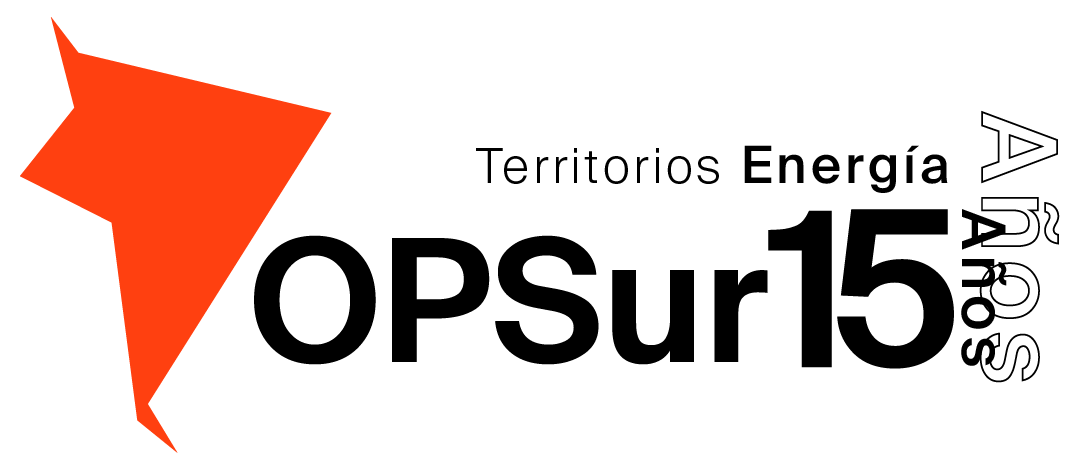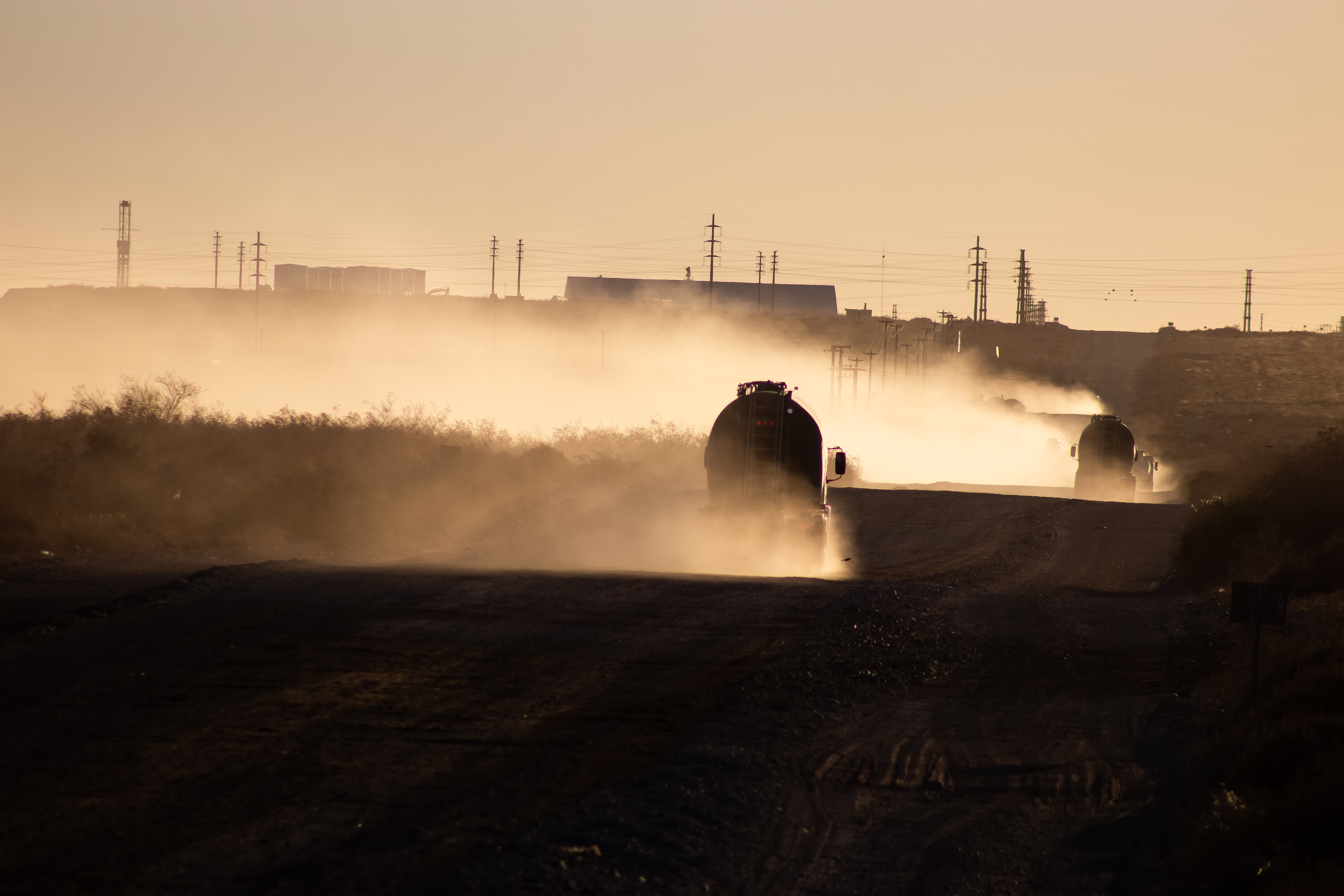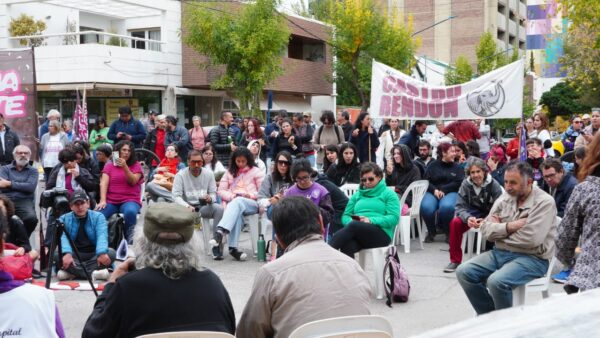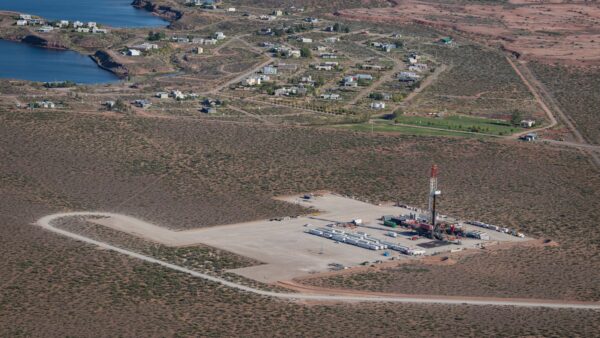Mariana Fernández* and Facundo López Crespo**
The exploitation of the Vaca Muerta mega-field became the centerpiece of Argentina’s economy, and the focus of governmental expectations around job creation, investment attraction, and exports boost. In a context of stagnation for most productive activities, the energy sector experiences a different reality that can be explained for the most part by the level of exploitation reached in Vaca Muerta. However, its progress is far from being what the government projected in the 2018 Energy Plan.
In September of that year, the former energy secretary, Javier Iguacel, toured the United States to meet with potential investors for Vaca Muerta. The aim was to show what business opportunities offers the mega-field (Argentina.gob.ar, 17/09/2018). In that context, he introduced the Energy Plan, consisting of several specific targets. Among them, to double national gas production in five years so as to reach 260 million cubic meters (9.1 billion cubic feet) per day¾of which 100 million would be exported¾, and to double national oil production in five years, to reach one million barrels per day¾of which 500,000 would be exported.
In March 2019, his successor, Gustavo Lopetegui, also toured the US in search of investments for Vaca Muerta (Argentina.gob.ar, 11/03/2019). The new secretary transformed the measurable targets for gas and oil production into abstract goals such as promoting infrastructure development, diversifying the energy matrix, and securing access to sustainable and affordable energy (Secretaría de Gobierno de Energía, 2019). This lack of precision seems to reflect the fact that the hardships are greater than forecasted.
The numbers of the activity speak of high growth rates. In May 2019, conventional and unconventional national production together boasted a year-on-year growth of 7.6% for gas and 4.8% for oil. However, even if these increases are relevant in historic terms and directly linked to the production performance in Vaca Muerta, they fall short of meeting Javier Iguacel’s Enery Plan targets.[1] In what follows, we will analyze four aspects underpinning the doubts surrounding the megaproject’s economic viability.
Dependency on subsidies
In 2013 the Gas Plan came into force, a stimulus program for gas extraction that guaranteed a price of 7.50 USD/MMBtu for surplus injection of gas beyond base production levels. The difference between the price paid by users and the stimulus price would be compensated with direct subsidies. Thus, operators received a higher price for production in new areas, which encouraged new investments and increased extraction. Even if the program did not discriminate by type of resource, its main objective was to cover the cost difference between conventional and unconventional exploitation (Arceo, 2016). In fact, investment in unconventionals had a significant increase over the Program’s lifetime. As a consequence, production of unconventional gas rose 912%, while its conventional counterpart fell 23% (Kofman & López Crespo, 2018).
In March 2017 via Resolution 46, the former Energy Ministry created a stimulus program for investments in natural gas production from unconventional reservoirs (the Programa de Estímulo a las Inversiones en Desarrollos de Producción de Gas Natural proveniente de Reservorios No Convencionales). Like the Gas Plan—still in force—, this program guarantees a specific price for the gas extracted in selected areas of unconventional production. The stimulus price follows a downward path, [2] so as to converge with the upward trajectory of the prices in dollars that had been established for the users.
Thus in 2018, production in areas favored by subsidies went up from 1.93 MMm3/d in January to 19.41 MMm3/d at the end of this year, an exponential growth as opposed to the relative stability of unsubsidized areas. During the same period, production in the latter only rose from 7.21 to 8.19 MMm3/d (Kofman & López Crespo, 2019). The subsidized area Fortín de Piedra—granted to Tecpetrol, Techint’s oil company—contributed the most to the increase in production. In fact, between January 2018, when large-scale exploitation begins in the area, and February 2019, when it reaches its maximum level of production, Tecpetrol’s share in total production of unconventional gas in the Neuquén basin went from 3.7% to 28.5%. That means the gas production increase—50% during those 13 months—is reduced to 10% if we exclude production at Fortín de Piedra.
Due to the way the stimulus was implemented, this hike in production brought about an increase in subsidy amounts. In the first quarter of 2019, the company received 53.8% of the 63 million dollars issued. Growing disbursements needed to pay the subsidy, together with a context of strong fiscal adjustment as part of the commitments with the IMF, led the government to establish a limit to the volume of excess production for which the stimulus price was paid. Against the backdrop of this dispute between the government and Tecpetrol regarding the interpretation of Resolution 46/2017,[3] the company reduced its activity levels and, in a letter to the National Securities Commission, said the decision was prompted by the change in the subsidies policy, “This change in criteria has a negative impact on the Society’s cash flow, for that reason (…) on this day the Board has instructed the General Management of the Company to review the terms of the Development Plan for the Fortín de Piedra area that were duly approved” (Jueguen, 5/02/2019). Therefore, after the government’s announcement that it would set a limit to the subsidized production, gas output from Vaca Muerta suffered its first decrease in March and April 2019, after three months of sustained growth.
This correlation between the level of activity in the different areas and subsidies received can be explained by the importance of the latter in the economic equation of the companies. A recent report by Fundación Ambiente y Recursos Naturales (FARN), states that subsidies received cover in average 50% of the investments made by the operators. For some companies, the incidence is even higher (FARN, 2019). As for Tecpetrol, the subsidies received during the first 9 months of 2019 through the Gas Plan accounted for 33% of the company’s sales revenues (Kofman & López Crespo, 2019).
Dependency on subsidies is not only a reflection of the companies’ investing reluctance, but also a structural aspect of the business—fracking’s high operational costs. On the one hand, if costs were reduced at the local level, there would still be a significant difference between the cost of a barrel produced in the US, in the Permian formation, vs. one produced in Vaca Muerta. The companies of the sector argue that the difference is explained by taxation schemes, industry practices, and productive efficiency, as well as an availability of more and better suppliers. This analysis led to regulatory changes with a view to modifying the work regime (Addendum to Collective Labor Agreements 644/12 and 637/11), lowering the cost of importing used equipment (Decree 629/2017), prompting changes in transport and infrastructure, and more recently, it has led to a discussion on the need to reduce the activity’s tax burden. That is to say, to get at least close to the costs in the Permian basin, viability of the business requires labor flexibilization, import of used capital goods, and fewer taxes.
On the other hand, beyond the local situation, the cost of fracking is higher than that of conventional exploitation. Two aspects come together: hydraulic fracturing requires more inputs, and its wells have a shorter productive life. Hence the need to fracture consistently in order to keep an increasing extraction rate, with the resulting high costs. Consequently, to guarantee profitability, fracking needs the elevated price of hydrocarbons, and there is no sign that its development can be compatible with a context of low prices. This conclusion, already seen on the global stage, puts into question the local strategy—if the prices securing Vaca Muerta’s viability are structurally high, its development requires subsidies to be a non-temporary policy, or the higher cost to be transferred to the users, who would pay even more than they do currently. At the same time, two macroeconomic problems worsen the tensions of this scheme: recurring devaluations—resulting in a rise in pesos of prices set in dollars—, and agreements with the IMF, which clamp down on amounts allocated to subsidies to cover in part the rising prices in pesos.
Major global actors find it irrelevant
A key aspect in Vaca Muerta’s massive development is the entry of big global players. Both due to the necessary investment amounts to develop fracking and to the technology needed, it has been known from the onset that the presence of big world operators would be fundamental. Official reports about the obstacles to development and the need to cut costs stress the importance of having more operators and service companies setting foot in Vaca Muerta. Thus, road shows to exhibit the benefits of Vaca Muerta to potential investors have multiplied.
In this investment drought, Vaca Muerta appears as an exception—between December 2015 and June 2019, the oil and gas sector accounted for 62.8% of the investment monies announced. But, far from being a rain of investments, as the president has referred to them, the sector has not seen an investing dynamics in line with official forecasts and wishes. Of the investment announcements, 58% belong to YPF, followed by far by Shell and Pampa Energía with 8%, and Tecpetrol and Vista O&G with 5%. Thus first in investments is the state-owned company, and other four firms of which three are controlled by local capital: Pampa Energía, from Marcelo Mindlin; Tecpetrol, Techint’s hydrocarbon wing; and Vista O&G, the company of former YPF president, Miguel Gallucio.
This feature, which could be interpreted as a success case of “national bourgeoisie” is in fact the expression of the government’s failure in attracting the big players. Based on a survey of corporate data from the major transnational companies active in Vaca Muerta, a recent report found that in general terms for these companies’ global strategy, the Argentine megaproject is not a priority investment target. In fact, almost no mention is made of it in their investment and extraction projections (Sanzillo & Hipple, marzo 2019). Various factors can account for this behavior—preference for other areas with guaranteed profitability, Argentina’s macroeconomic uncertainty, doubts about its capacity to develop the required infrastructure, and the fact that some companies are changing their image by investing in renewable energies, among others. This is something to which attention must be paid, —if countries in the North fulfill their de-fossilization promises, there will probably be very little market left for hydrocarbons coming from such a distant country like Argentina.
An uncertain potential market
The energy sector has been running up a deficit on their trade balance since 2011, which can be attributed mainly to an insufficient gas production that cannot satisfy the domestic market. In 2018, 80% of the gas demand was covered with local supply, while the remaining 20% came from imports.[4] However, during the last summer period, gas was exported for the first time in ten years, because the local demand was surpassed. Three factors came together to make it possible—a higher supply coming from the extraction activities in Vaca Muerta, a lower demand due to the economic slump, and most important of all, a contractual impossibility to adjust imports from Bolivia. In spite of having resumed gas exports, volumes exported were lower than the imported, hence the deficit balances were never overcome. In May, with the summer period finished, residential demand grew due to lower temperatures, and exports were reduced. At the same time, imports increased considerably. This explains how gas exports are mainly due to contractual matters that make imports rigid, and have a seasonal nature.
Moreover, the destination of those exports were only Chile and Uruguay. Their share in exports were 93% and 7% respectively. The average export price was 4.90 USD/MMBtu, lower that the average import price of 6.90 during the same period.
That said, should Vaca Muerta achieve the development scale expected by the government, the volume of surplus gas would be way superior to the volumes demanded by bordering countries potentially interested in buying it (Chile, Uruguay, and Brazil). That is, it is necessary to access other markets beyond the region. In line with this expectation, YPF plans to build a liquefaction plant in Bahía Blanca, to be able to ship liquefied natural gas (LNG), and it is also promoting regulatory changes to shield export contracts on the long term. The main target market for these projects is Asia. However, this means competing for such markets with countries like the United States and Russia. Therefore, two major obstacles to making Vaca Muerta an exporting platform come together—the lack of competitiveness to dispute markets with the main world economic powers, and the lack of basic associated infrastructure to support that strategy.
Lack of infrastructure
So far, Vaca Muerta’s exploitation project has been developed by using the infrastructure inherited from the splendor of Loma La Lata (Scandizzo, 2019). However, that infrastructure needs reconditioning. What is more, official production forecasts and the features of the new technologies used for unconventionals require other kind of works—new pipelines, waste dumps, and other logistic solutions to satisfy the demand of inputs, the storage of the hydrocarbons obtained, and exports.
There are currently two priority projects joining together the provinces of Neuquén and Buenos Aires: a gas pipeline from Tratayén (in the vicinity of Añelo) to Salliqueló (west of Buenos Aires province) with a carrying capacity of 40 million cubic meters (1.4 cubic feet) per day; and a freight train that would connect Añelo with the port terminal in Bahía Blanca, which would transport 730,000 tons of sand and steel tubes per year.
The Norpatagónico train requires a planned investment of 780 million dollars. According to official presentations, it would reduce by 50% the cost of transport and by 17% the cost of the sand that is currently being transported from the province of Entre Ríos. Works include renovation and enhancement of part of the existing railways, and construction of new ones to access Añelo. Even if both the companies and the government stress the importance of this projects, different attempts at finalizing it have been unsuccessful.
In June 2018, the government of Neuquén signed an agreement with Transportadora Gas del Sur (TGS) to build the “Vaca Muerta gas pipeline”. A year later the works had not yet begun. Only by July 5th, 2019, through Decree 465, a national and international public tender was launched to grant the concession for gas transport services, which includes the design and construction of the first segment of the gas pipeline.
The difficulties to finalize these two basic infrastructure works for the development of the megaproject bring about major doubts as to the possibilities that the bombastic projections the government shows to investors will ever become a reality. Currently, even at its premature development stage, there is no way to place the total volume of extracted gas in the market. Therefore, Vaca Muerta’s massive development requires gas storage methods that so far have proved unfeasible, even though alternatives such as underground storage in abandoned wells and the construction of offshore tanks in local or foreign regasification ports have been contemplated. In addition, the promise to turn Vaca Muerta into a big export platform has as a precondition the development of export infrastructure at a very high cost, such as liquefaction plants.
Therefore, it is worth asking not only how likely it is that these infrastructure investments will eventually arrive, but also what kind of financial efforts and regulatory sacrifices will they require from the State. With a view to accelerating the development of infrastructure, the government has introduced important regulatory changes, for example, in transportation, without observing the deadlines, proceedings, or the provision of necessary information to allow local communities to take part in decisions that affect their territory. In economic terms, the promotion of dedicated infrastructure for the development of this megaproject implies a big bet on a business that cannot be profitable unless production is placed in external markets, whether it is due to the presence of cheaper producers or to the de-fossilization of energy matrices.
Far from offering any certainties, the official forecasts for Vaca Muerta resemble wishful thinking that adjusts itself as reality evades optimism. The dependency on subsidies of the big operators present in the Neuquén basin and the lack of interest and investments on the part of most of these companies are an expression of the uncertainties surrounding the megaproject’s viability. The latter depends to a great degree on conquering distant markets in a context of low prices and competitors who offer lower costs, as well as the development of infrastructure that will only become valuable if Vaca Muerta actually fulfils the government’s high expectations. But so far there are no certainties about the economic viability of this kind of projects, even within an economic system that does not factor in their socio-environmental impacts.
*Economist (UNS) and university professor (UNM). Post-doc fellow at the National Scientific and Technical Research Council (CONICET) and member of Enlace por la Justicia Energética y Socioambiental (EJES).
** BA in Economics (UNR), researcher at EJES.
References
Arceo, N. (2016). Transferencias de recursos en la cadena gasífera, Tercer Congreso de Economía Política, Departamento de Economía Política del Centro Cultural de la Cooperación y Universidad de Quilmes.
Argentina.gob.ar (17/09/2018). Iguacel expuso en un seminario en Houston sobre inversiones en Vaca Muerta. Available online.
Argentina.gob.ar (11/03/2019). Dujovne y Lopetegui presentaron oportunidades de inversión en el sector energético por U$S 30.000 millones para los próximos años. Available online.
FARN (June 2019). Los subsidios a los combustibles fósiles en Argentina 2018-2019, Fundación Ambiente y Recursos Naturales. Available online.
Jueguen, F. (5/02/2019). Por los subsidios al gas, Techint analiza dar de baja 300 empleos en Vaca Muerta, en La Nación. Available online.
Kofman, M. & F. López Crespo (2018). Informes económicos sobre los hidrocarburos no convencionales en Argentina”, Enlace por la Justicia Energética y Socioambiental. Available online.
Kofman, M. & F. López Crespo (2019). La producción hidrocarburífera en 2018: los subsidios como respirador artificial”, Enlace por la Justicia Energética y Socioambiental. Available online.
Sanzillo, Tom & Hipple, Kathy (marzo 2019). Financial Risks Cloud Development of Argentina’s Vaca Muerta Oil and Gas Reserves, Institute for Energy Economics and Financial Analysis. Available online.
Scandizzo, H. (2019). “Exportar Vaca Muerta. Energía extrema, infraestructura y mercados”, Enlace por la Justicia Energética y Socioambiental. Available online.
Secretaría de Gobierno de Energía (2019), “Energía en Argentina. Oportunidades de inversión para la comunidad internacional”. Available online.
[1] The plan projected an annual 12% increase in gas, and 14% in oil for 2019.
[2] Stimulus prices agreed upon were: 7.50 USD/MMBtu for 2018; 7.00 USD/MMBtu for 2019; 6.50 USD/MMBtu for 2019, and 6.00 USD/MMBtu for 2021 (Resolution 212/16).
[3] For a more detailed analysis of the reasons for this controversy see Kofman & López Crespo, 2019.
[4] The shortage of local gas is even higher because, due to the lack of domestic supply, liquid fuels (such as gas oil and fuel oil) are imported during winter or used to generate electricity. If those imports are taken into account, the local supply of gas is enough to cover 76% of the domestic market needs.






There are 3 comments
Comments are closed.